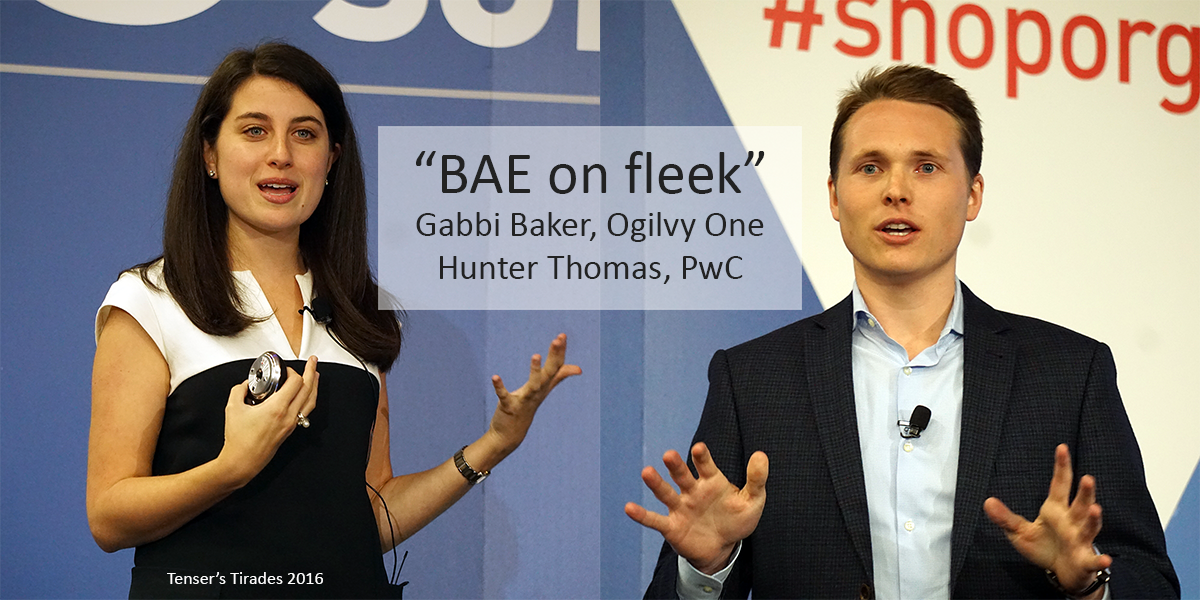I’VE BEEN ON RECORD many times as a hater of shopper loyalty, but an advocate of intelligent personalization.
I admit my position can be construed as mincing words, but I remain stubbornly committed to the distinction. When marketers and retailers try to ascribe loyalty to their card-carrying customers they are usually delusional. When they demonstrate their commitment to those customers through good acts – by providing relevant values and experiences – they embark on a golden path.
Supermarket chains so regularly miss this distinction with their frequent shopper card programs that it is a small revelation to encounter one who seems to have it right. In a presentation at the National Retail Federation Convention and Expo this week in New York, Loblaw Companies, Ltd., the leading grocery operator in Canada, shared some insights about its PC Plus shopper program, launched last May, that suggest it belongs in that exclusive tier.
“From our best customers we capture 55-60% of their share of wallet. That leaves so much opportunity just with them,” said Peter Lewis, Sr. Dir., Customer Analytics & Loyalty at Loblaw (pictured at left in the photo above, with Graeme McVie, VP and GM at LoyaltyOne.)
That’s an insightful way of looking at the return from a frequent shopper program that truly distinguishes highest-value relationships and cultivates them accordingly. Best shoppers deserve our best efforts because they are our best prospects too.
Loblaw has embraced this approach with PC Plus, its digitally-enabled frequent shopper program, said Lewis. On a year-over-year basis, enrolled customers who used the targeted offers changed their behaviors in desirable ways:
- They increased their number of visits by 12%
- Their average basket size increased by 5%
- The number of categories they purchase increased by 7%
Lewis also shared some statistics from the first 6 weeks of the program that indicated rapid acceptance:
- 40% of sales were made using the card
- More than 6,000 members were signed per store
- 50% email open rate
- 35% click-through rate on those emails
PC Plus uses analytics to deliver relevant, highly personalized offers. With thousands of offers available across the store, the mix is tailored down to the individual level, based on each shopper’s history.
“How big is the prize from personalization?” said Graeme McVie of LoyaltyOne, the company which helps Loblaw implement and operate PC Plus. “Even with best customers, opportunities exist to grow share of spend.” He shared an analysis of the 50 store categories across the top 20% of customers, which indicated a 50-70% share of spending, a finding which underscores the present value of best shoppers, but also their upside potential.
PC Plus is increasingly focused on the smartphone app as the “control center” for the shopper, Lewis said. It allows them to manage shopping lists from their phones, informs them of available offers, and allows them to accept offers in real time, even while waiting in the checkout lane moments before a transaction.
McVie added that the design of PC Plus is oriented toward “democratizing shopper insights.” Its strategy is two-fold: understand the needs of individual customers and consistently execute actions to satisfy them.
I’ve stated previously in this blog that we are entering a “post-loyalty” era, but intelligent personalization is far from dead. In fact it may just be hitting its stride at Loblaw.
© Copyright 2014 James Tenser



